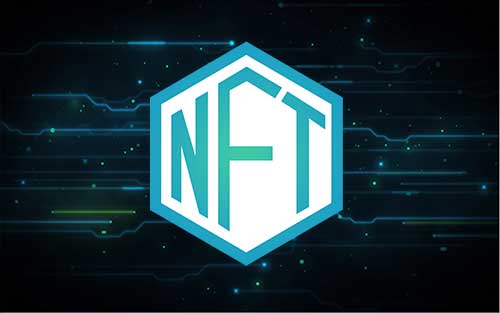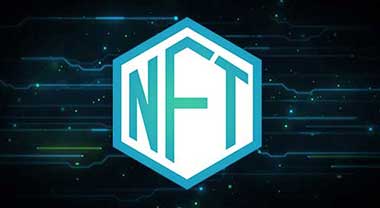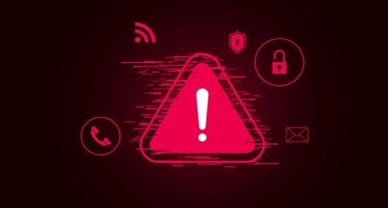NFTs and its Relationship with IP Rights
Introduction

In order to understand the relationship between NFTs and IP Rights, it would be pertinent to explore what NFTs are, how they work, what rights are granted to the buyer, the effect this has on the rights of the original creator. Since this is a new phenomenon, the lack of regulation results in NFTs operating in a legal vacuum.
What are NFTs and how do they work?
An NFT is a digital collectible or asset in the form of a token. In other words, they are blocks of code that provide authentic proof of ownership over a particular copy of digital art. Apart from art, NFTs also deal with all kinds of photos, memes, music and video clips, GIFs, and other digital pieces. In essence, NFT transactions operate on the same technology like cryptocurrency, i.e., the blockchain. NFTs are predominantly part of the Ethereum blockchain. NFT transaction data is stored in a public registry, making the ownership visible to the public and ensuring that the asset is one-of-a-kind. In economic terms, they are non-fungible, meaning they cannot be replaced or replicated. On the other hand, fungible assets such as most cryptocurrencies are interchangeable with other cryptocurrencies since each unit will have the same market value and no unique or distinguishable value. This is the primary difference between NFTs and most other forms of cryptocurrency. The uniqueness of the token or code coupled with the anticipated future value and the ownership history is what gives NFTs their value.
The creators of NFTs sign up to an NFT marketplace where they write a set of smart code that then becomes part of the blockchain that they are using for the transfer. This code provides basic information and the properties of the NFT such as its location, outside the blockchain. This way, anyone who purchases an NFT gets a digital certificate through which they can prove their ownership of that copy of the work.
Generally, NFTs are purchased through a process of online bidding, similar to the auction process conducted in Christie’s, Sotheby’s, or other auction houses. While the bidding process can slightly differ based on the platform used for trading, usually there is a price floor set by the creator, and bids are opened for a specific time period and the highest bidder. The NFT creator sets the price floor and bidding starts and ends within a given time period, usually 24 hours. All transactions related to the NFT are recorded on a blockchain. Mode of payment can differ, with some platforms allowing only ETH (Ether- cryptocurrency of Ethereum blockchain). The Beeple auction at Christie’s for instance, was off-chain as bidders were allowed to bid in both physical currency and ETH in order to improve accessibility. This was done despite the artwork being minted on the Ethereum Blockchain.
Discussions on the need for and uses of NFTs
The important thing to note about NFTs is that, regardless of the original copy of the work the NFT now exists for, the buyer only gets ownership over that particular copy of the creation that they purchased as an NFT. For instance, when a copy of the famous Nyan Cat GIF was sold as an NFT it was still very much usable and viewable by the public. However, the buyer of the NFT now had ownership over one unique copy of the same GIF.
Art collectors all around the world have jumped on the bandwagon of NFTs considering it as not just a collectible but an investment. However, artists are more skeptical about the trend, with some considering it as a welcome move to digitally propagate their art on a much bigger platform while some still have questions about its moral and ethical underpinnings. Some even consider it to be nothing more than a stunt to try and commoditize digital images by giving someone verified ownership over something that circulates freely on the internet and can be easily shared, seen, and stored by anyone.
NFTs create digital scarcity for otherwise easily reproducible and replicable artwork. This coupled with the excludability of an NFT, provides value for both the creator or seller of the NFT and the buyer. Artists and creators now have a much wider customer base and a far easier way of promoting and selling their artwork. Serving as a new medium, NFTs have the potential to increase the money and accessibility prospects by a hundred-fold. Where an artist could be selling their physical painting to a local customer for $100, the digitalized form of the same piece of art has the potential to be valued at $50,000 or even $500,000 when it is put into an auction as an NFT. To be noted in this example, however, is that the original painting remains with the creator who can sell that copy as well.
How are IP Rights and NFTs related?
While this is a very interesting discussion, most of it is mere speculation because most people do not yet understand NFTs. The future of NFTs is still uncertain and it depends on a lot of factors, similar to the advent of cryptocurrency and surrounding debate. Since NFTs are mostly restricted to artwork or other forms of expression of creativity, especially digital art, at this point in time the major discussion is the impact NFTs have on copyright law.
Copyright is a type of Intellectual property right that gives the creator of any original artistic, literary, musical, or dramatic work the exclusive right to reproduce, copy, publish, disseminate, adapt or sell, among others. Copyright law in India is governed by the Copyright Act, 1957. One misconception when it comes to NFTs is that copyright over the creation gets directly transferred to the buyer of the NFT. This is not the case, unless there is an express transfer of copyright by the creator or seller to the buyer through the contract at the time of sale. The only rights that get transferred to the buyer are the exclusive right of ownership over that particular copy of the work, the right to display the copy, and sell the copy to someone else. Since the blockchain associated with that particular NFT will record all future resale, the ownership is easily verifiable and monitorable by the original creator. The original creator still owns the copyright over the original and subsequent copies and can make further copies out of the original and sell them as NFTs. This is similar to a scenario where a comic collector has ownership over a particularly prized edition he has purchased. While he can display it or exchange them with another collector, he will not hold the copyright of the comic edition.
Currently in India, NFTs are not barred by the Copyright Act. In fact, some of the existing Copyright provisions provide for the protection of works converted as NFTs in an implied manner. Although this is not a standard practice across NFT platforms yet, to differentiate themselves from their competitors, some platforms are offering NFT Royalty grants. According to this ‘creator’s share’ policy, every time a creator’s work is sold in the future, the creator will receive a specified share of the price. For example- if an NFT is resold by the buyer for 100 ETH (which is a ridiculously hefty price considering the conversion rates), and it is mandated that the creator should get 5-10%, then the creator will receive 5-10 ETH. But the possibility of implementing this progressive policy on all NFT platforms is very strenuous.
There is no current regulation surrounding NFT platforms where creators can display their work. This results in a lack of uniformity between these platforms and their specific rules and policies. This in turn also paves way for undetected copyright violations, where an already copyrighted work could be converted into an NFT and sold by an anonymous seller without obtaining permission from the creator. Given the information gaps and lack of uniformity between the different platforms, counterfeit or identical copies could be minted without the creator’s knowledge and sold by others. It is easier to exploit the information asymmetry when the position of NFTs itself has not been fully clarified. One of the main purposes of NFTs is to prohibit the distribution of illegal copies and to fully legitimize the owner’s ability to sell their original work or copies of their work. Since anything qualifies as an NFT, many have started to sell old memes or other materials already existing in the public domain. There have also been instances where a “digital artwork” that is just a plain color or just one pixel has sold for millions of dollars. The question that can be raised with respect to these bizarre, unimaginative, and humorously priced ‘commodities’ is, what kind of Copyright protection can be granted to such creators? Can it qualify as an original work and does it fulfill even a minimum level of effort or creativity? The answer to this, at first might seem like an emphatic no, but since NFTs have perceived values based on the interests of the people and since NFTs and Copyrights are not the same, it turns out to be a much more complex problem to answer. The creation being sold as an NFT has a copyright, but the NFT in itself is nothing more than a valid certification or signature verifying the purchase.
Thus, while NFTs do provide a lot of opportunities for creators of art, music, and anything creative or artistic in terms of revenue, engagement, and increased value, there are equally damaging cons of NFTs that could take away possible chunks of revenue and credibility from artists and creators.
A possible way forward and some suggestions
Earlier in the first few generations of NFTs, the buyer could not profit off of his purchase and could only display or otherwise use it for personal reasons. However, the creator can carve out specific conditions for the use of NFTS which could serve to fulfill particular conditions, such as getting monetary profit off of the tokens. Dapper Labs, the company that was behind the earliest NFTS like crypto-kitties and NBA Top Shots, came up with a concept called NFT License 2.0. This concept enabled the purchasers of the NFTs to profit off of their tokens up to the amount of $100000 per year. While this is a new and interesting step in the development of NFTs as a whole, it is also a fact that it becomes increasingly difficult to police the users and prevent them from going over the fixed cap. Due to this problem, NFT creators may prefer a flat-out ban on the monetization of their creations.
NFTs operate through blockchain networks. One of the most important parts of the blockchain concept is the creation of smart contracts. Smart contracts can basically be defined as contracts in which the conditions are embedded in code. With reference to NFTs, smart contracts can be created which have NFTs embedded within them, such that the NFT transfer takes place on the fulfillment of the terms of the contract. However, smart contracts are still under legal scrutiny by legislatures and judiciaries around the world and work is being done to create a legally valid system of smart contracts. This would serve to further validate NFTS as a mode of income or serious financial consideration.
These are some examples of new developments in the field of NFTs that could possibly fuel holistic conversations about IP Rights and NFTs and how NFT platforms could be better synced and developed to better protect IP Rights.
Author: Deepika and Dileep Ramesh- students of School of Law, Christ University (Bangalore), in case of any queries please contact/write back IP And Legal Filings at support@ipandlegalfilings.com.



